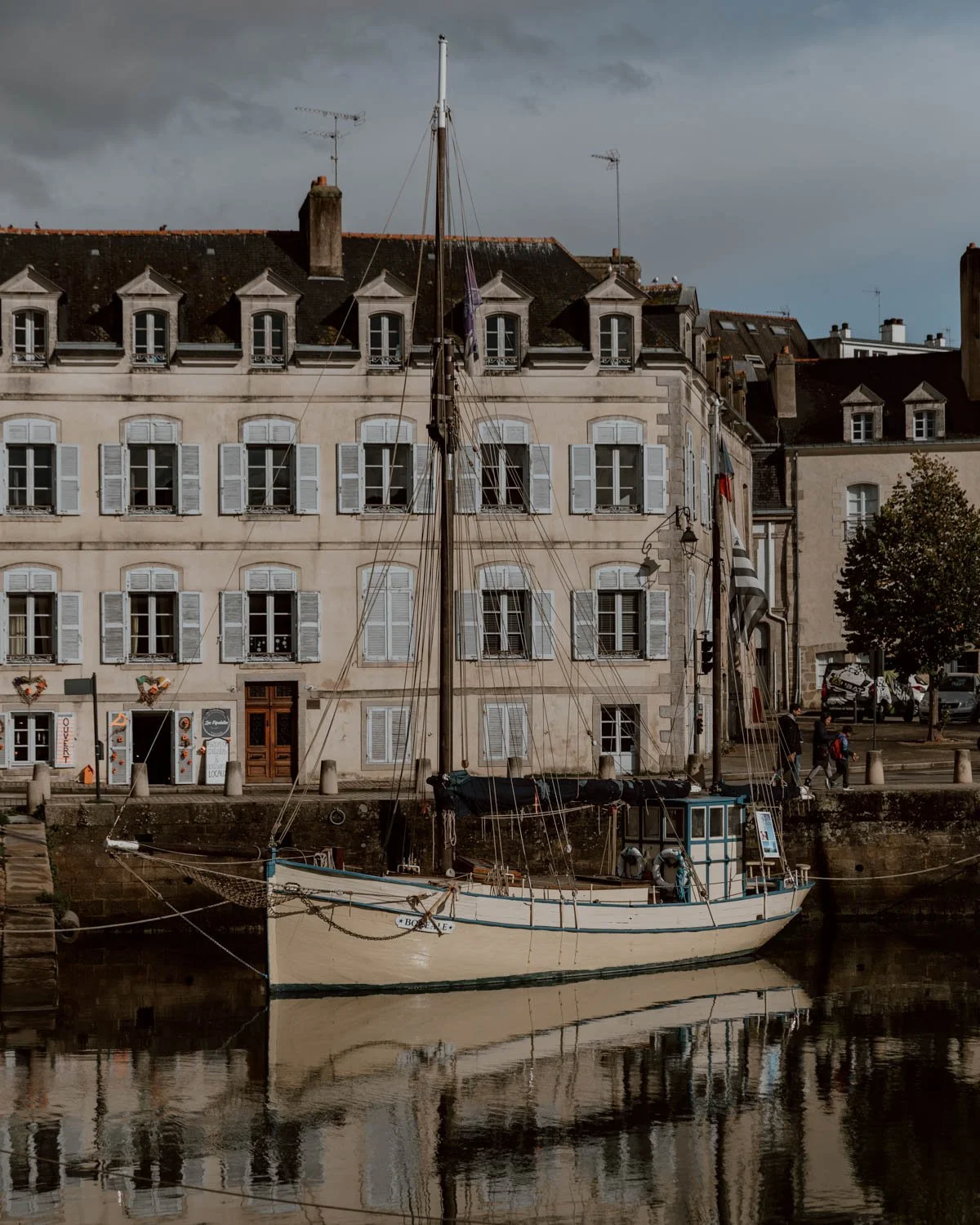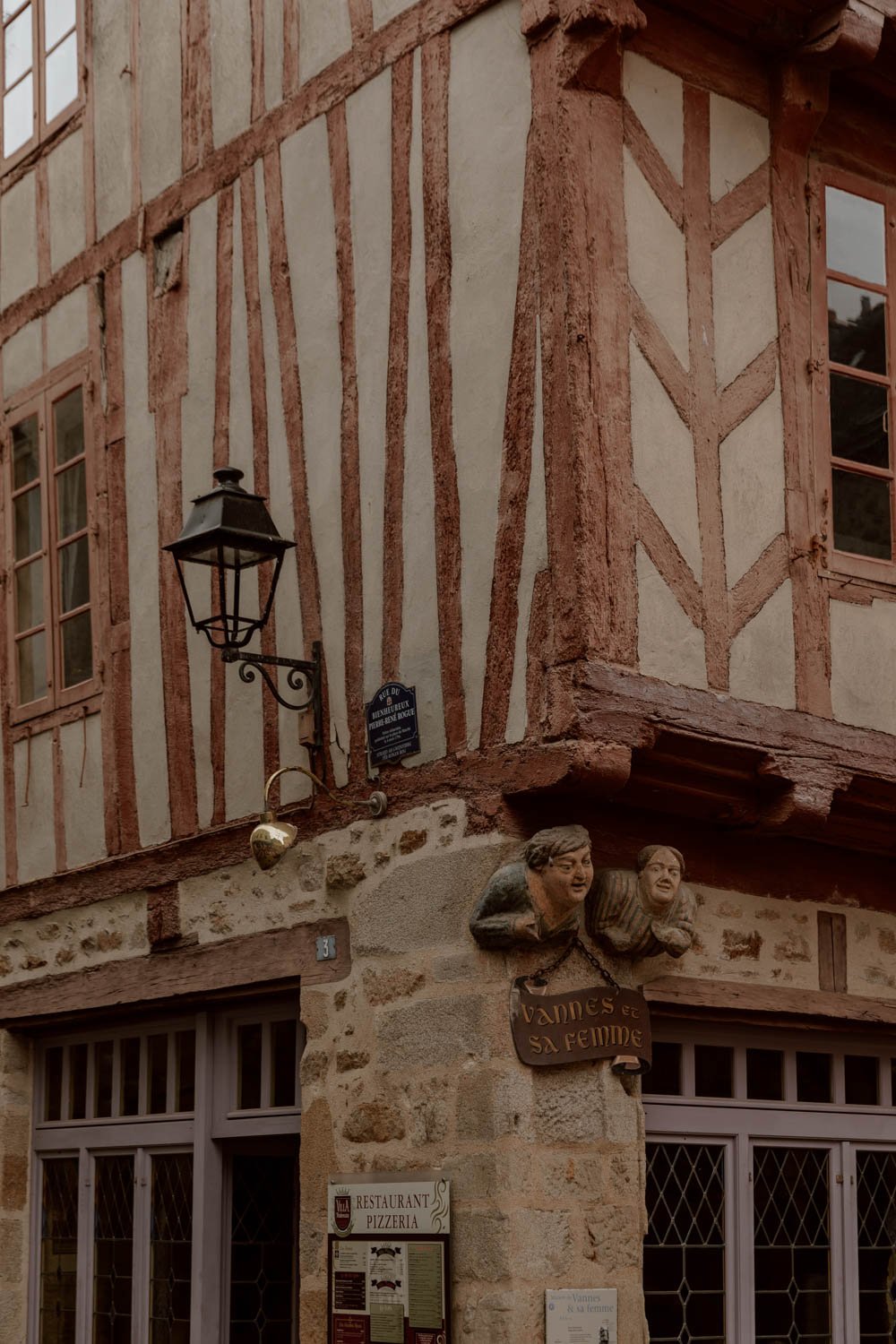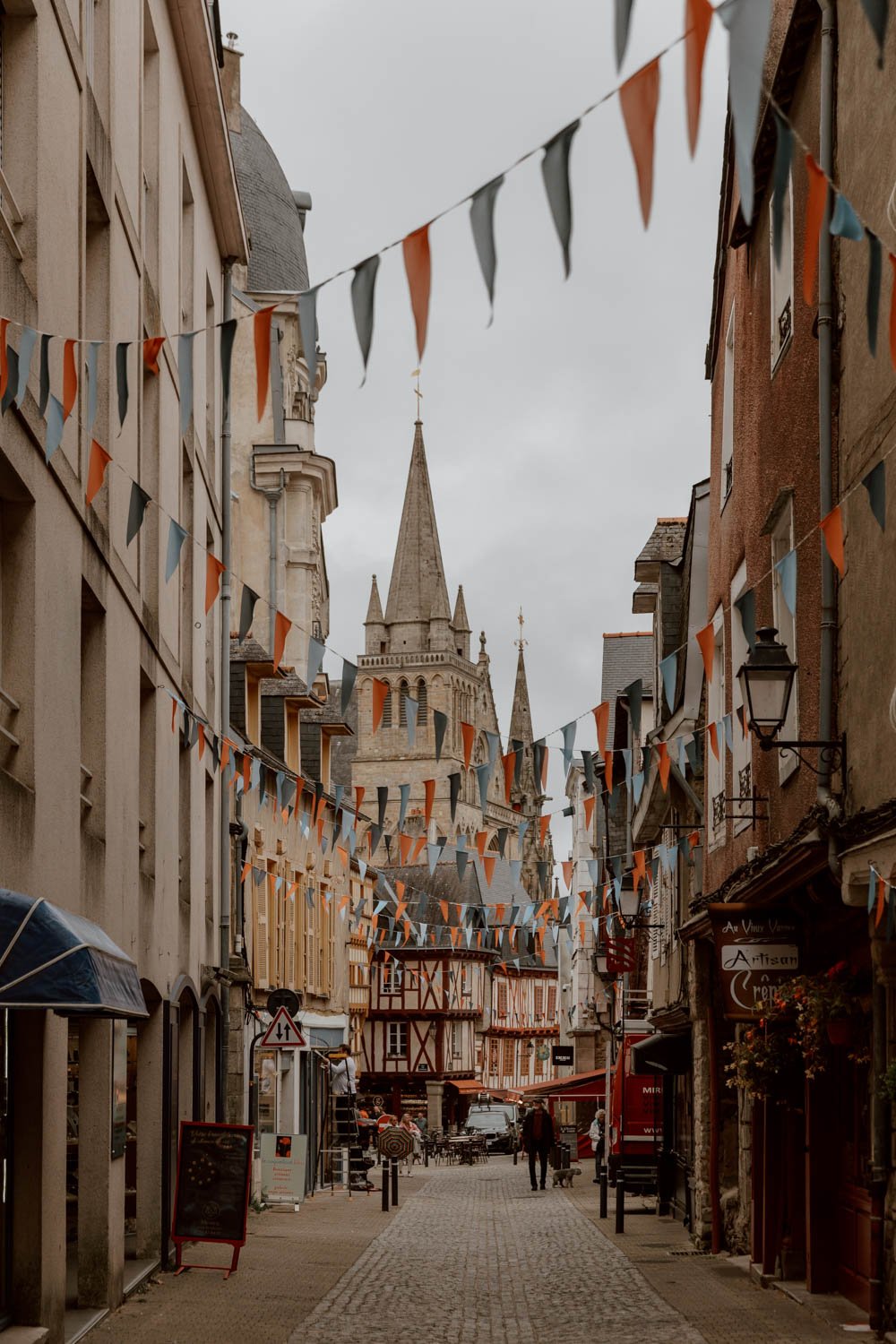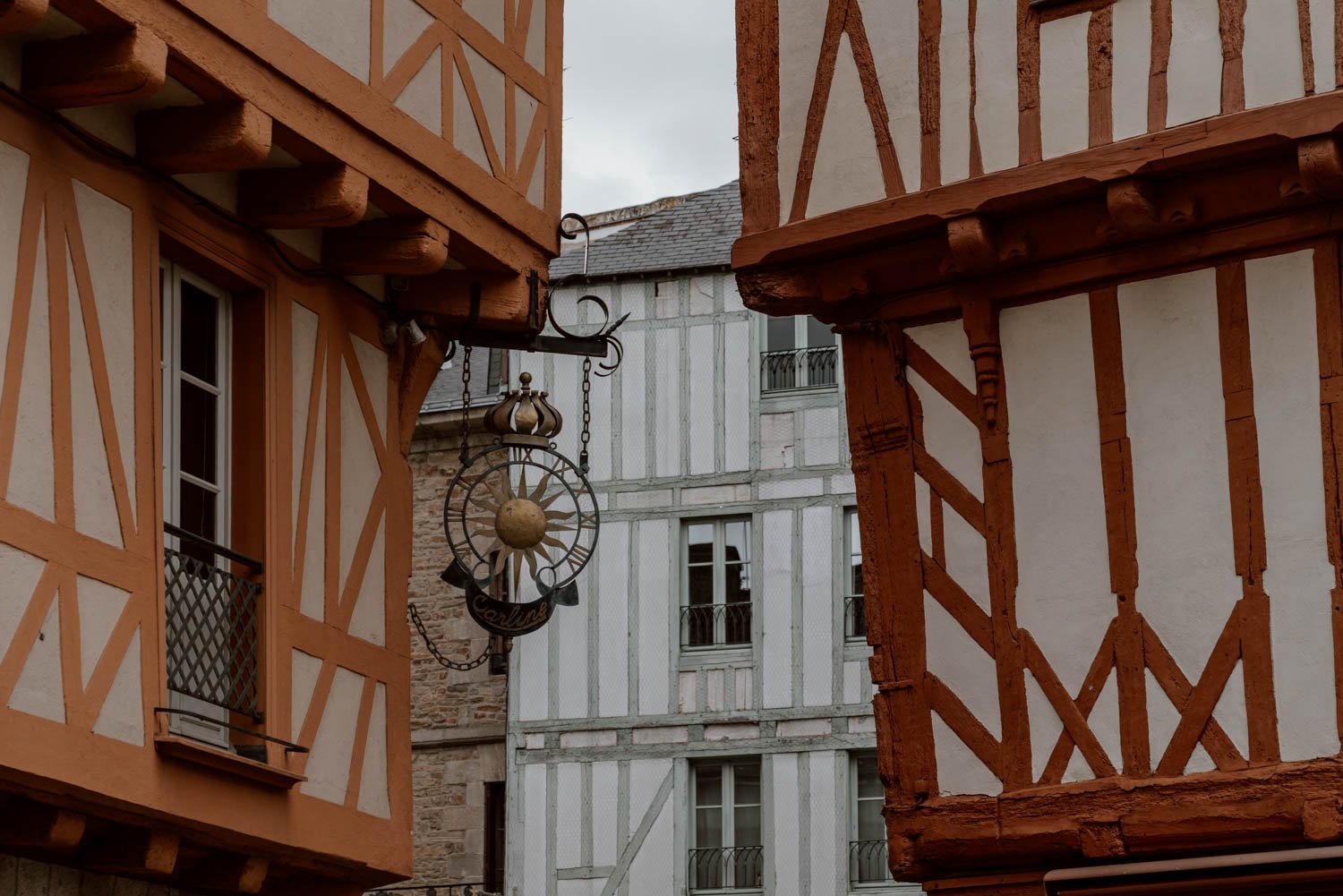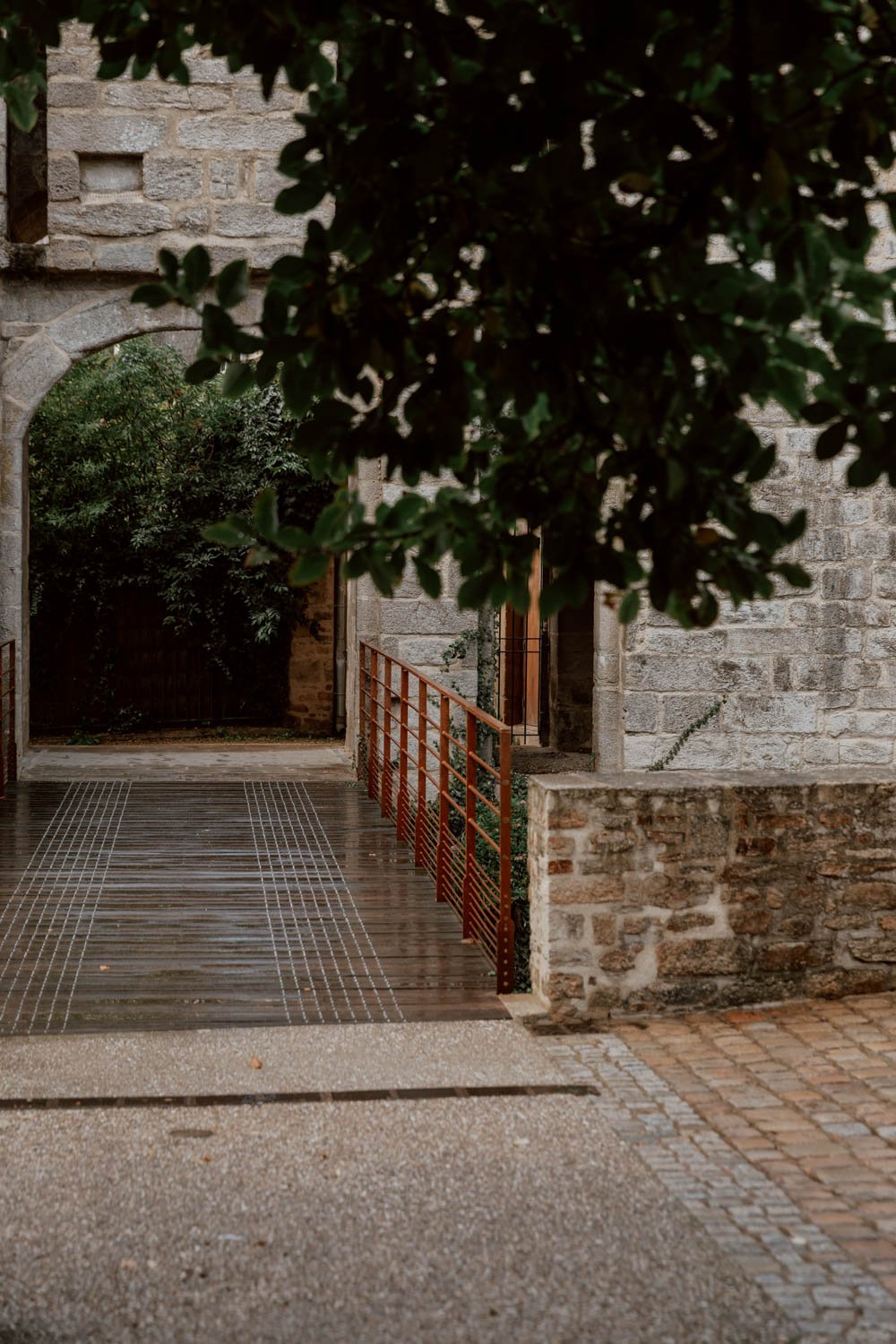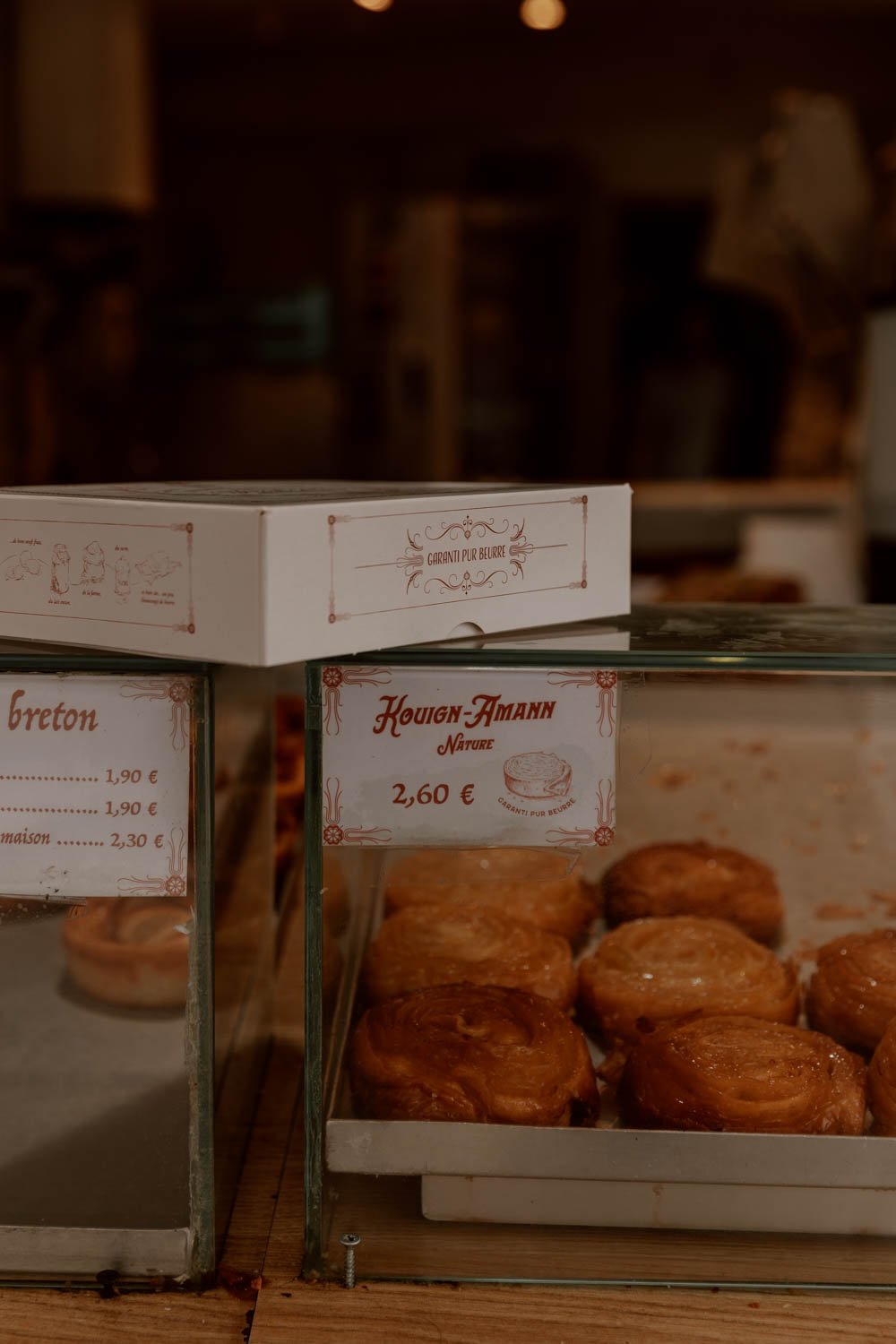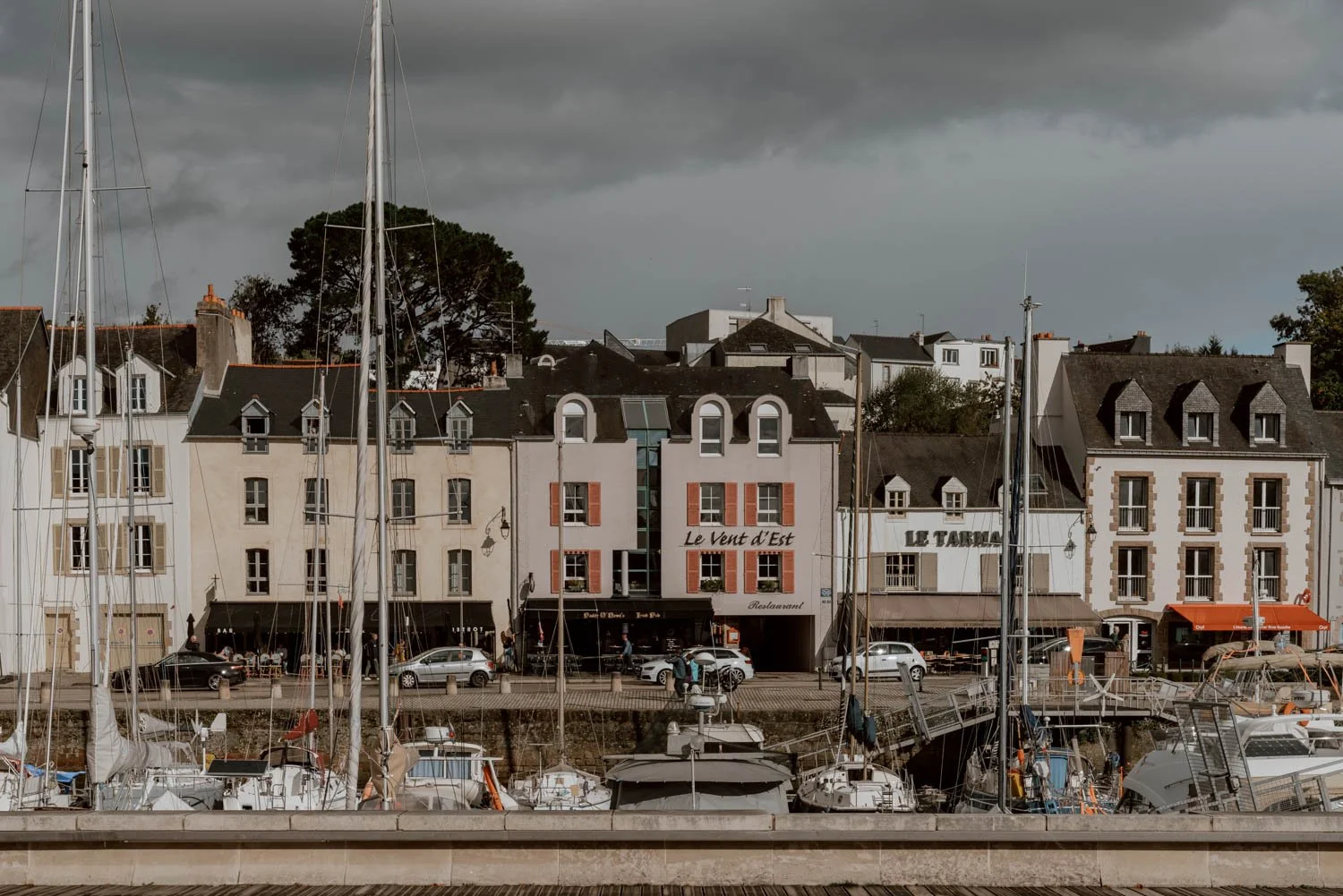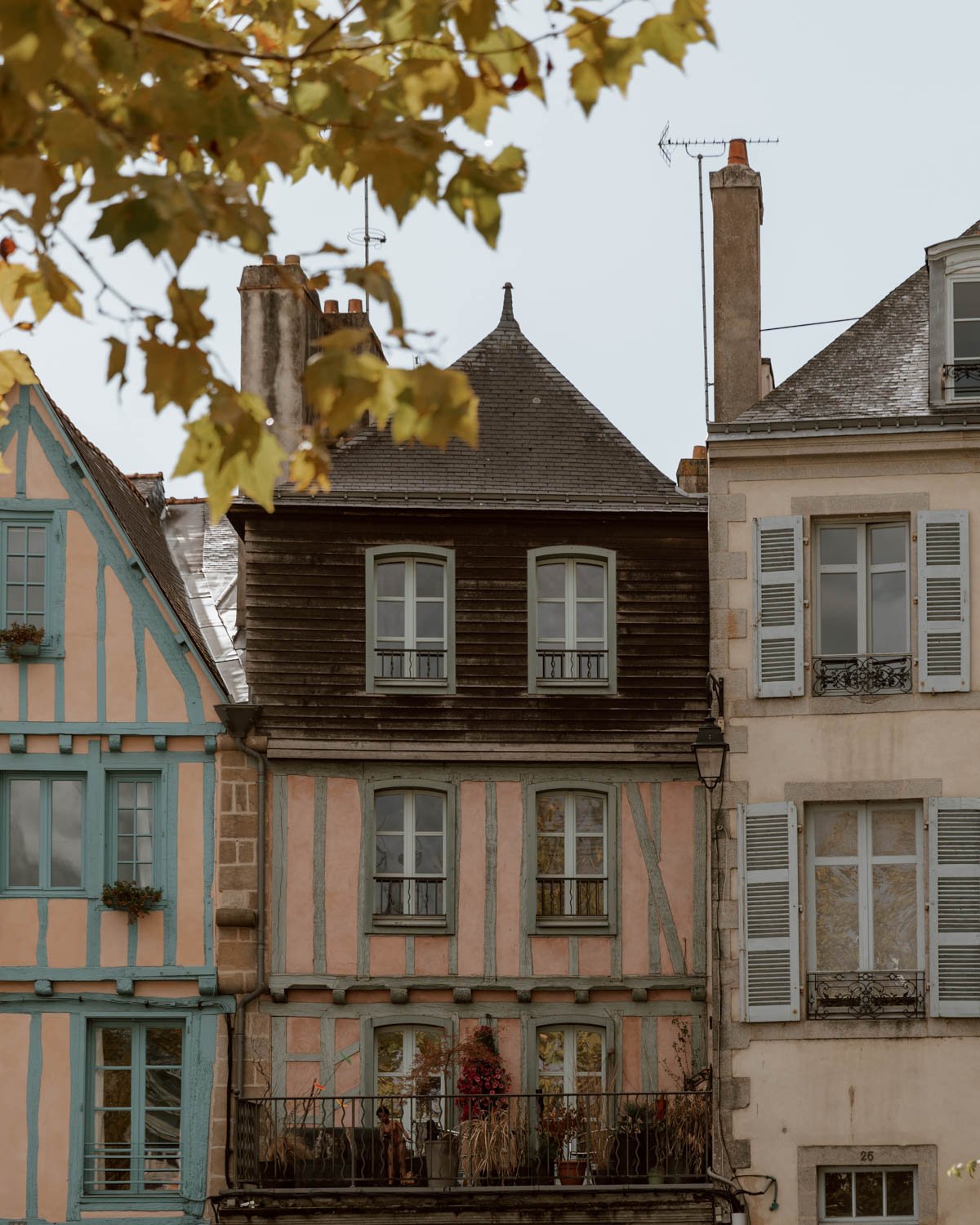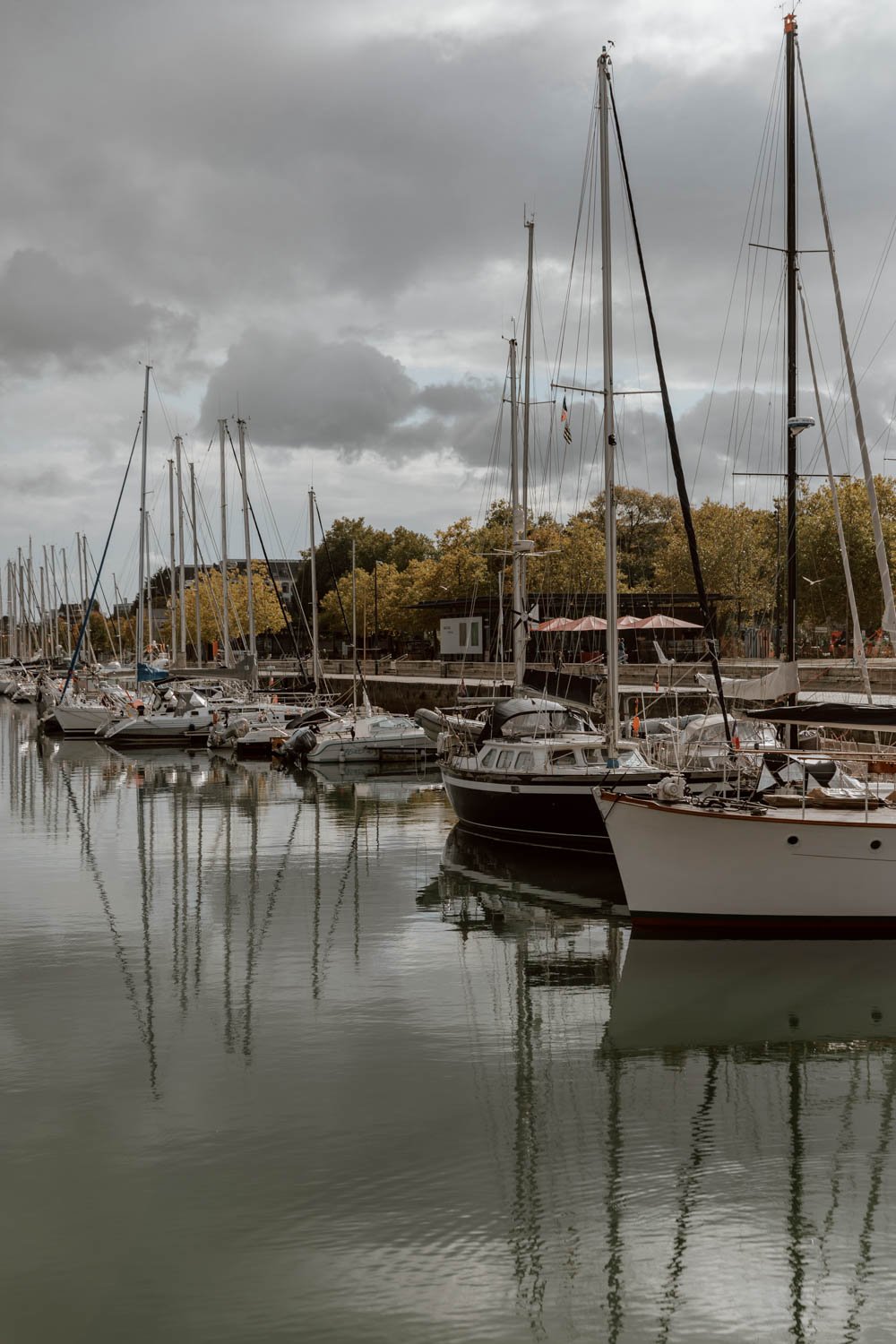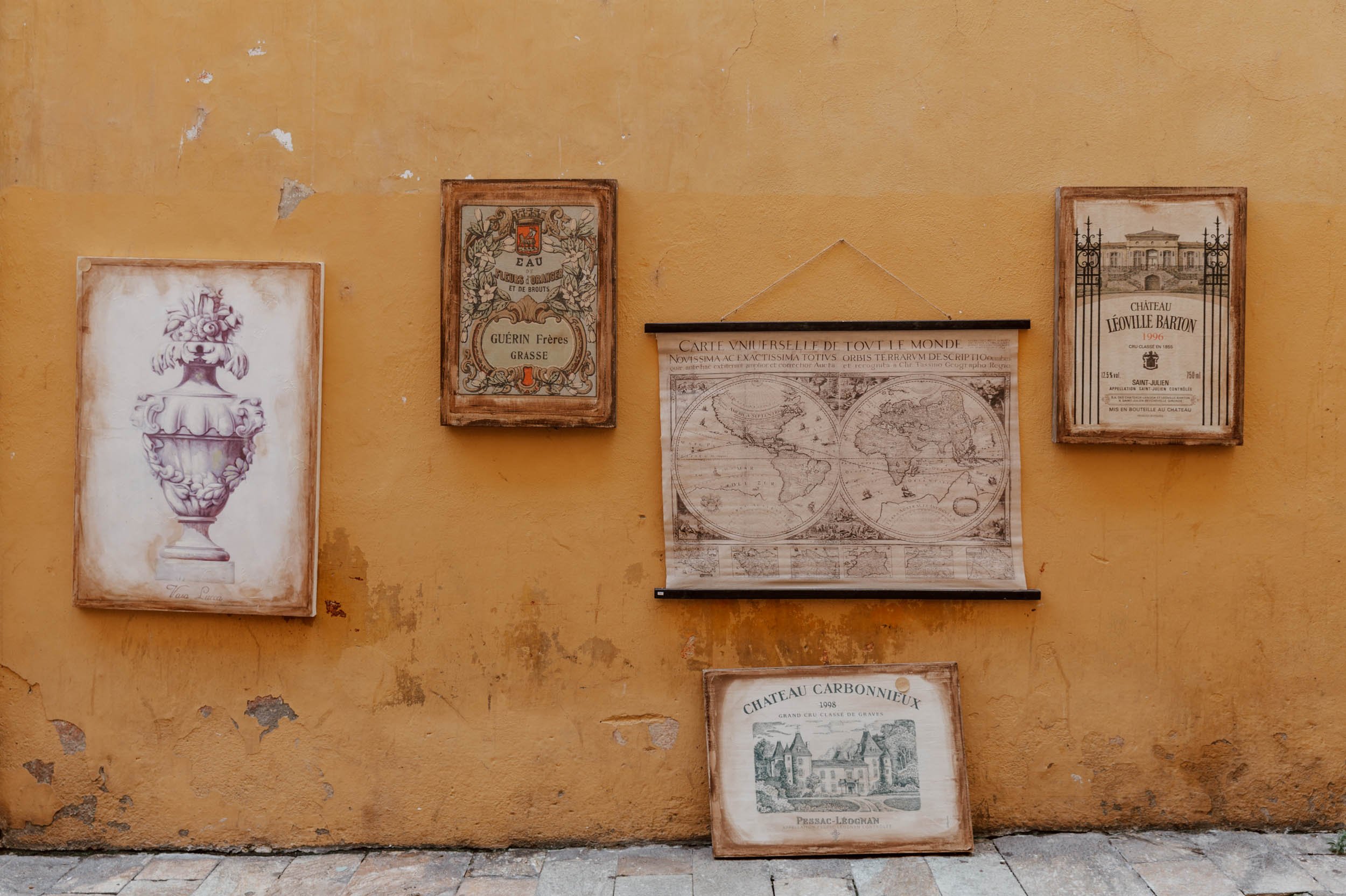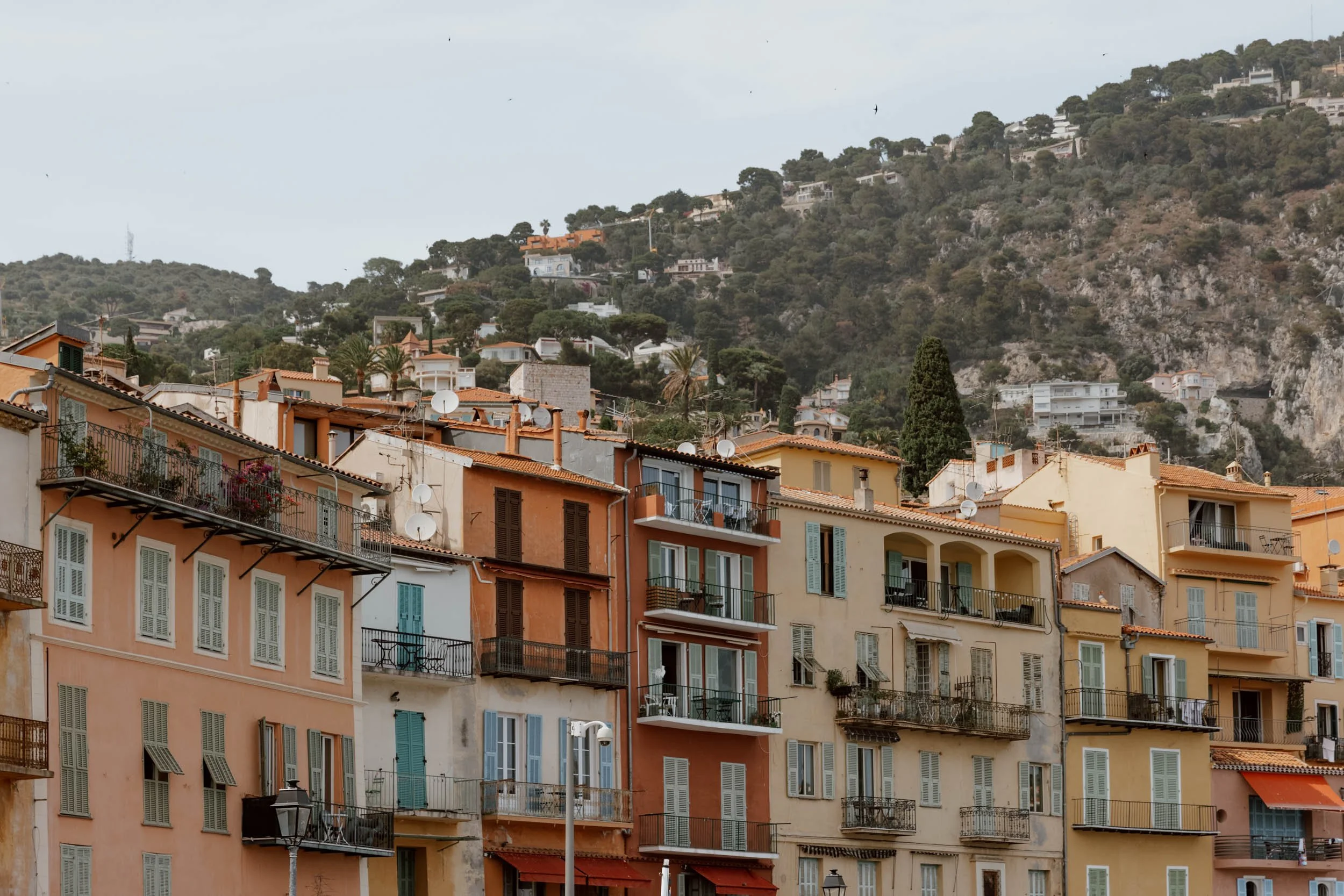On the south coast of Brittany, where the mouths of the Marle and the Vincin rivers meet, you’ll find the quaint market town of Vannes.
It may not be bursting with big tourists attractions or renowned for a grand historical moment, but Vannes certainly has plenty of charms to offer day-trippers in the region.
The capital of the Morbihan département, with a population of around 60,000 people, its excellent selection of thriving independent shops and restaurants, film-set pretty medieval streets and emerging arts scene belie its relatively modest size.
This is why, despite a downpour first time round, we actually visited Vannes twice in our week of slow travel in Brittany.
In this post, we've shared our recommendations for your own time here - whether it's just a half-day visit on your way to/from somewhere else on the coast, or a longer stay in this southern town near the sea.
These are the best things to do in Vannes.
Things to Do in Vannes
// Saunter the old town
// Discover the half-timbered houses
// Take a stroll through the gardens
// Admire Chateau de l’Hermine
// The Kouign-Amman taste test
// Hit up the museums
// Grab a drink at the harbour
// Head out to the islands
The Best Things to Do in Vannes
Saunter Around The Old Town
As travel around the Golfe du Morbihan is all about water, nature, islands, and countryside retreats by apple orchards, Vannes offers the opportunity for a change pace and scenery.
It’s more like saunter and shuffle than hustle and bustle though.
Encircled by ramparts and imposing defensive towers, much of your time in Vannes will be within the historical centre; a place where you’ll slowly meander around the cobblestones on foot, browse boutiques and antiques, sip coffee in a photogenic square or two, and find many of the best things to do in Vannes as well.
You enter old Vannes through one of several old portes, relics of the town’s fortified redesign following a handful of sackings in the 13th century, and the granite Porte Saint Vincent (maps) is the main access point. According to legend of the Vannetais, if the raised hand of the saint’s statue atop the gate is lowered, their town will be swallowed whole by water…
Vannes feels like a film-set version of a certain French aesthetic for several reasons, but we couldn't help but notice how much the variety of independent shops dotted throughout the historic centre added to this. With wooden signs and beautiful window displays, there's everything from antiques to boutiques, homemade jams to hand-crafted Japanese blades, and vinyl records to Instagram-worthy interiors; with many a treasure to be found over the course of an afternoon's browsing, we recommend leaving aside some time for shopping.
The Cathédrale Saint-Pierre (maps) has a surprisingly austere interior but its blend of Romanesque, Gothic, and Renaissance style is worth your time, and it’s free to enter. Rue Saint-Guenhaël, to the right of the Cathedral entrance’s red doors, leads down to the Porte Prison and has a number of excellent curio, book, and art shops as well as one of the best crêperies in Vannes.
If you see a curious number of people gathered on the corner of Rue Rogue and Rue Noé it's due to the most famous couple in Vannes residing there. Mr & Mrs Vannes - or Vannes et sa femme - is a little painted sculpture on the corner of an old timber building which has become one of the most photographed things in the town.
The Half-Timbered Houses
The team at Along Dusty Roads now actually live in a 400-year old half-timbered house (that is a sentence I never thought I'd write), so our appreciation of this slanting, over-hanging, higgildy-piggildy architectural style has shifted in the last year: instead of gazing at bulging walls and beams in wonderment, it's more 'is our house going to fall down?' and 'the insurance costs how much!?'
For people living in England, timber-frame Tudor houses are quite a common sight, but usually referred to as the 'old black and white houses', given that they almost always exist in sober monochrome. Here in the cobbled streets of old Vannes though, it's a positive explosion of colour, with the beams painted various tasteful shades red, orange, yellow, green, and even bright blue.
In French, they're known as maison à colombages - half-timbered houses - and typically date from as early as the Middle Ages to the 17th century. Some of the finer examples were constructed when the Breton Parliament, exiled from Rennes, was based here.
You can appreciate these facades as you saunter around the old town, but there also some beautiful examples outside the gates. Some of the prettiest points to see or photograph are:
Place Henri IV | Arguably the prettiest little place Vannes, it's a good spot to sit with a coffee and admire the facades and shop-fronts. Look up so you don't miss the point where two half-timber buildings which almost 'kiss' each other across the space, with the Cathedral spire in the background. Find it here on Google Maps.
Quai Eric Tabarly | Outside the city walls on the port's promenade, there is photogenic collection across the water and to the right hand side of Café du Kiosque (maps)
Port Prison | The vibrant red and white of Bar Le Saint Nicolas by the imposing old prison gate is quite a bold example of the form (maps)!
The Ramparts & The Garden
If you've spent some time in Saint Malo, it's important to understand that the medieval defensive walls and ramparts of Vannes are not quite as preserved, clear-cut, accessible or dramatic as those sea-facing ones. Indeed, we were a little confused about when we were actually on them or looking at them in parts, and it isn't really possible to walk along them in the style of other walled cities (like the aforementioned Saint Malo or York in England).
However, what is crystal clear is that the best place to appreciate what remains of them, and enjoy one of the best viewpoints of Vannes, is by the Jardin des Remparts (maps).
These pretty public gardens, designed and laid out in the typically pristine and prim French-style, lay between the ramparts, watchtowers and a trickle of the river Marle flowing toward little old washhouses (lavoirs). As well as a sometime setting for markets, they offer an enjoyable place to relax in the sunshine, give your feet a rest after a few hours' walking the cobblestone streets, or people watch with a photogenic backdrop.
Admire Chateau de l’Hermine
Just a short walk from the gardens, you'll find the stunning Chateau de l’Hermine integrated into the ramparts.
The building, one of the most striking we saw in Vannes, is often mistaken for being the fortified residence of the Duke of Brittany. Although the original Chateau de l’Hermine (maps) was built here at his request, it's long gone; after being partially destroyed, its stones were used to repair the ramparts and build the port of Vannes.
And so, what you see today is an altogether more modern construction, relatively speaking of course, built in the 18th century on the same site as the Duke's castle. It passed into the State's ownership following the owner's bankruptcy, and has been used for all manner of activities and functions since. However, it is now slated to be the permanent home of a new Fine Arts Museum by 2025, depending on funding and restoration, but for the moment you'll have to content yourself with simply admiring it from across the way.
Travel Tip // There are a different ways to combine the above, but we recommend exiting the old town at Porte Saint Vincent (maps), taking a left toward Chateau de l’Hermine, down the stairs at Porte Poterne and entering the Jardin des Ramparts via the Lavoirs de la Garenne (the public washhouses dating back to the late 18th century - maps). After you're done there, continue on to Porte Prison (maps) and re-enter the historical centre there.
You can of course do this in reverse too, and note that the best viewpoint for photos is actually from the roadside on the level above the gardens.
The Kouign-Amman Taste Test
One must arrive to Place des Lices with an appetite.
The curiously-shaped square, once the setting for jousting tournaments, is the first place you'll visit if you enter Vannes through Porte Saint Vincent and the shops of Rue Saint Vincent, and we recommend you have a quick stop to indulge in Brittany's sweetest treat.
We had the good fortune to order a Kouign-Amman, the regional pastry and a calorie-busting work of buttery glazed goodness, on our first day of this trip, and one half of Along Dusty Roads insisted that we have at least one each day before the boat back to Blighty.
Our noses led us toward François (maps) on the first brief, rainy visit to Vannes, where the sweet buttery smell wafts out all day and we bought a box (that didn’t last thirty minutes) of a fresh Kouign-Amman and an exquisite version of the dense Gateaux Breton.
However, an Instagram follower who lives in Nantes insisted that we really should have gone to La Huche à Pain (maps), where her family stop to buy pastries any time they're off to Île aux Moines.
So, naturally, in the interests of science and research, we had to go back.
Armed with this knowledge dear reader, you can now arrive and know exactly what to do. Both these bakeries are found in Place des Lices, almost exactly opposite one another, so do a taste test for yourself (or grab a box to take with you), and let us know which was your favourite.
Aside from indulgent pastries, Place des Lices is also the spot to come for food generally in Vannes. It's got Halles des Lice, the permanent indoors market (open Monday to Saturday, 8am-2pm), as well as the Marché de Vannes taking over on Wednesdays and Saturdays. We'd make a point of visiting around this if it fits your itinerary, with stalls selling Brittany's renowned oysters and seafood, cheeses, ciders, and all manner of other local produce and goodies.
The Two Museums
There are two small museums of note in Vannes, both situated in the historical centre. A visit in either doesn't take up more than an hour or two at most, and they're ideal rainy day activities too.
The one we'd suggest your prioritise is La Cohue - Le Musée des Beaux-Arts de Vannes (maps). Set within a 13th century building that was once the Breton Parliament, the space of stone, oak and shadows is as far away from a white cube as you could hope. The focus of the permanent exhibition is early 19th and 20th century art, but there are temporary exhibitions and contemporary installations taking place throughout the year.
The Museum of History and Archaeology in Château Gaillard (maps) focuses on the Neolithic period (there are numerous sites in the region) and the early history of Vannes and Brittany.
Where + When // Opening hours vary according to the season: from June 1st to September 30, the museums are open every day from 1.30pm to 6pm; from October 1st to May 31st, La Cohue is open 1.30pm to 6pm Tuesday to Sunday, but the Museum of History and Archaeology is closed for the duration.
A combined entry ticket to the two museums is €7 full-price, €5 for concessions, and free to under 25s (prices may reduce out of season as only one museum is open, but I'm afraid we don't know for certain!)
Did You Know // Brittany became part of France in 1532, and the Treaty of Union was signed here in Vannes.
A Drink By The Harbour
Despite its proximity to the sea and its historic wealth accrued from its trading port, for us old Vannes doesn't really feel like a coastal city; the squawk of seagulls and scent of salted air weren't present at all within the walls, and the character of the buildings and streets didn't scream maritime either.
It's only when stepping outside Porte Saint Vincent that it all starts to make sense, with around 300 sailboats old and new bobbing away in the thin marina on La Marle. This 2km long channel connects the town to the Gulf of Morbihan, and is actually a deceptively large harbour due to its stretched out, linear design. As well as bringing sailors in and out, the surroundings have been thoughtfully redeveloped in the last decade to create Le Port de Plaisance, a lively area full of restaurants, bars, and social spaces.
Place Gambetta, the square immediately outside Porte Saint Vincent which replaced a bridge that once linked the port to the ramparts, is a good spot for a long lunch and dinner - especially if other restaurants have already stoped service - and there are some cool bars lining the left bank of the harbour.
The pedestrianised promenade starting here will also bring you as far as Vannes' Gare Maritime and the 15-acre Parc du Golfe nature park.
Travel Tip // In cider country, a rebel drinks beer; a rebel leader brews it. A very popular place amongst locals is Brasserie Awen (maps), a craft beer mico-brewery and restaurant opened in 2019. It's about a 20-minute walk along the promenade from the historical centre, or a short-drive, but it's the only place to try their beers (brewed on site), as well as guest beers from other French micro-breweries. If in doubt, order a flight of six beers to find your favourite!
To get a better idea of how important cider is to Brittany’s culture, read this article.
A Day Trip To The Islands
The Golfe du Morbihan is an archipelago of 42 islands, but only two - the Île d'Arz and Île-aux-Moines - are populated.
Sought after summer holiday destinations with French nature lovers, each offers up fantastic options for year-round walks, cycles, and disconnections in an unspoiled, peaceful place which feels like it's a million miles away from the mainland.
The good news for travellers though is that one of them is actually just a 40-minute ferry ride away from Vannes!
We spent a couple of days exploring little Île d'Arz on rented bicycles, but it's definitely feasible as a day trip from Vannes if you're based in the city and looking for a change of scenery - find out more and transport connections in our guide to the Île d'Arz.
From Vannes, it's also possible to make your way to Île-aux-Moines, the larger of the two islands, but a little less convenient. Firstly, Port-Blanc by car or bus (maps, 15km) and then take the short ferry ride across the water.
Good To Know // It’s also possible to simply do a shorter boat trip from Vannes to explore the Golfe du Morbihan. The local tourism website offers an overview of companies and trips, and you can also book your excursions at the Vannes Tourism office - find it here.
How To Get To Vannes
There's no airport in or near Vannes, and most of you will visit by train or as part of a longer road-trip in and around Brittany.
If you're arriving, like us, on the ferry from Britain to Brittany, then it's a 2-hour drive from the northern city of Saint Malo to Vannes in the south. For this reason, it makes sense to include it in and around the Golfe du Morhiban / south coast section of your travels.
The most convenient place to park up is the paid underground Parking Q-Park Port (maps), which is a two-minute walk from the main entrance gate to the historical centre.
It's less than three hours from Paris to Vannes by train, with several departures a day, and numerous connections to other French cities. The Gare de Vannes / train station is situated a 15-minute walk from one of the entrances gates to the historical centre - find it here.
As we mentioned, if arriving from Île d'Arz, the port is a short drive or bus ride from the historical centre.
Where to Next?
Cider, Seaweed and Slow Travels in Brittany
The Île-D'Arz Travel Guide | An Island In Brittany
The Best Things to Do in St Malo (published soon)
A Journey Through Nouvelle-Aquitaine
Our Favourite Things to Do in Angouleme


